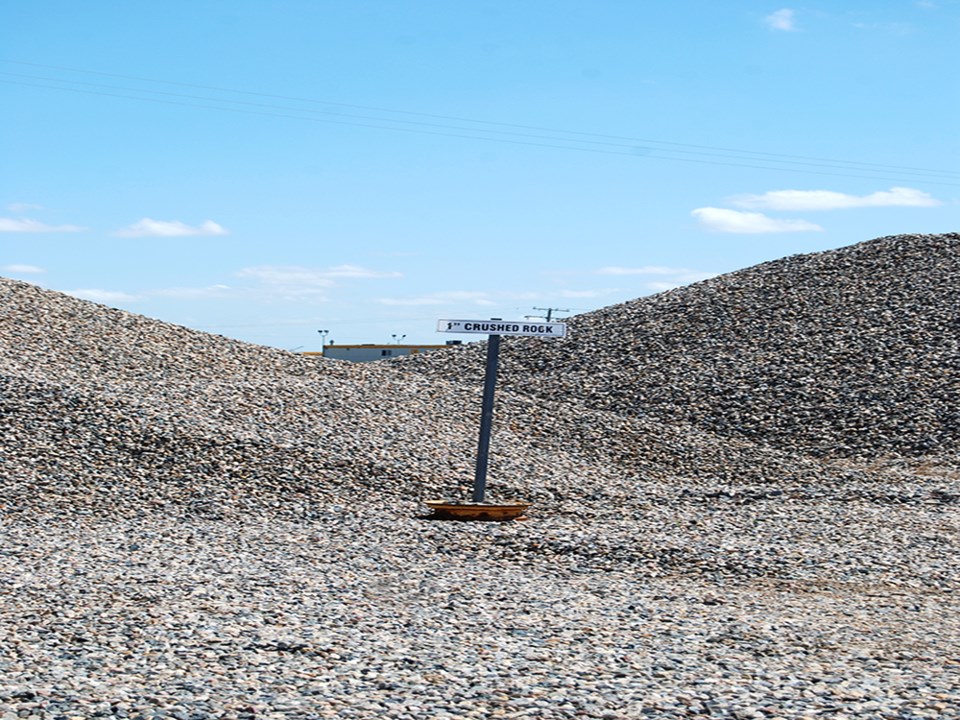Gravel: pebbles and pieces of rock coarser than sand. It’s something we often take for granted, whether zipping down the roads and highways, or hearing it crunch underfoot, on footpaths and trails. As it turns out, the seemingly endless supply of this material will soon begin to dwindle as sources become depleted, all around the province.
“Gravel is not found everywhere. It’s a natural resource that’ll run out with time, and it’s started to run out here. That’s basically the sad truth,” said Grace Potter, administrator with the Rural Municipality (RM) of Estevan.
Potter estimates that the shortage in the Estevan area began within the last five years, and notes part of the reason for the shortage was how gravel was handled back when mining began in the area.
“The mine wasn’t concerned with that product at the time, when they went through. There would have been seams of gravel at the time that were just put at the bottom of the pit and thrown away,” said Potter. “Part of that is because the area was mined the way it was.”
Ed Turnbull, president of Turnbull Excavating Ltd., said there is a growing demand for gravel, which leads to an increase in value. He has seen royalty payments on gravel rise from $1 per yard to $3. “I can see that being five dollars a yard within five years, for sure.”
Turnbull noted that his company is fortunate to have ample sources of good-quality gravel in pits near Stoughton and Oxbow, which will be viable for at least another couple decades.
“There are some pits that haven’t been tapped into yet, but their owners are sitting on them. They know it’s going to be worth gold soon,” said Turnbull. “They’re happy to just sell some and
watch the price go up. Things are going to get pretty tight.”
Presently, the RM of Estevan pays a large quantity of money to have gravel hauled in from sites outside its municipal limits. Potter says the RM also uses recovery methods on gravel, so it can be reused.
Estevan is also looking at alternatives to gravel, particularly in the case of road construction and maintenance. According to Turnbull, RMs in Saskatchewan in general are considering alternatives such as sand and chemical treatments to serve as a replacement for gravel, noting that in the case of the former, the quality is very poor.
A chemical alternative in the works for the Estevan area is a material known as claycrete, an engineered, clay-based material customized to the particular soil type of the area in which it’s used. It works by minimizing the amount of fill material needed for road construction, by reducing the shrink-swell of clay in the soil.
“It’s a clay binder at the molecular level, changing the molecules so they lay flat and pack very hard. It’s harder than nature can pack clay,” said Wayne Gallipeau, an agent with Americhem, a company that uses biodegradable acid to harden clay to serve as a base for roads.
“(Claycrete provides) a hard, flat surface that moisture won’t penetrate into.”
Adam Dinwoodie, CEO and representative of Americhem Clay Stabilizer, LLC, noted his company has been in consultation with the RM and City of Estevan, and will be doing soil testing at numerous sites in the area this coming fall, anticipating the use of claycrete as an alternative to gravel.
Turnbull said they’re really feeling the pinch in the Regina area. The demand for gravel is particularly strong there because there are few places in the vicinity of the city from which to choose, to obtain gravel.
“The haul is longer for them, and the material they’re getting isn’t as good,” said Turnbull. “I think you’re going to see RMs and cities buying up gravel and expropriating it. They have to use poorer quality materials because anything good is cost-prohibitive at this point.”



